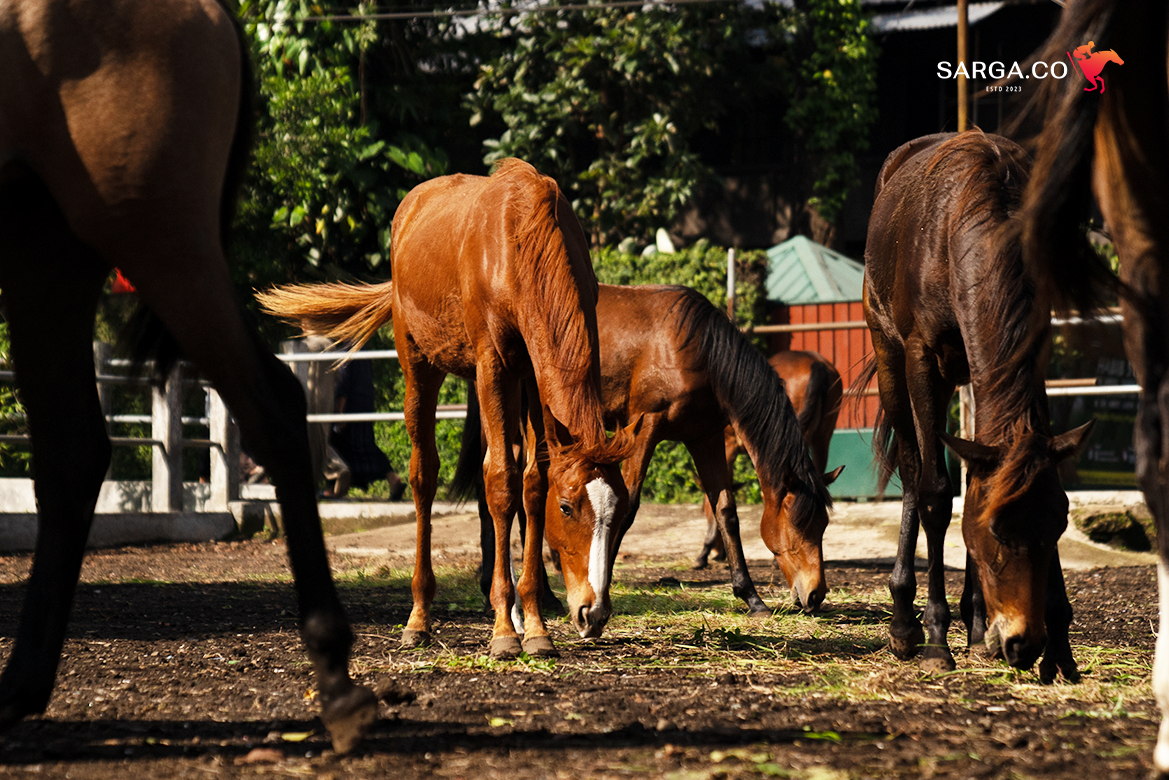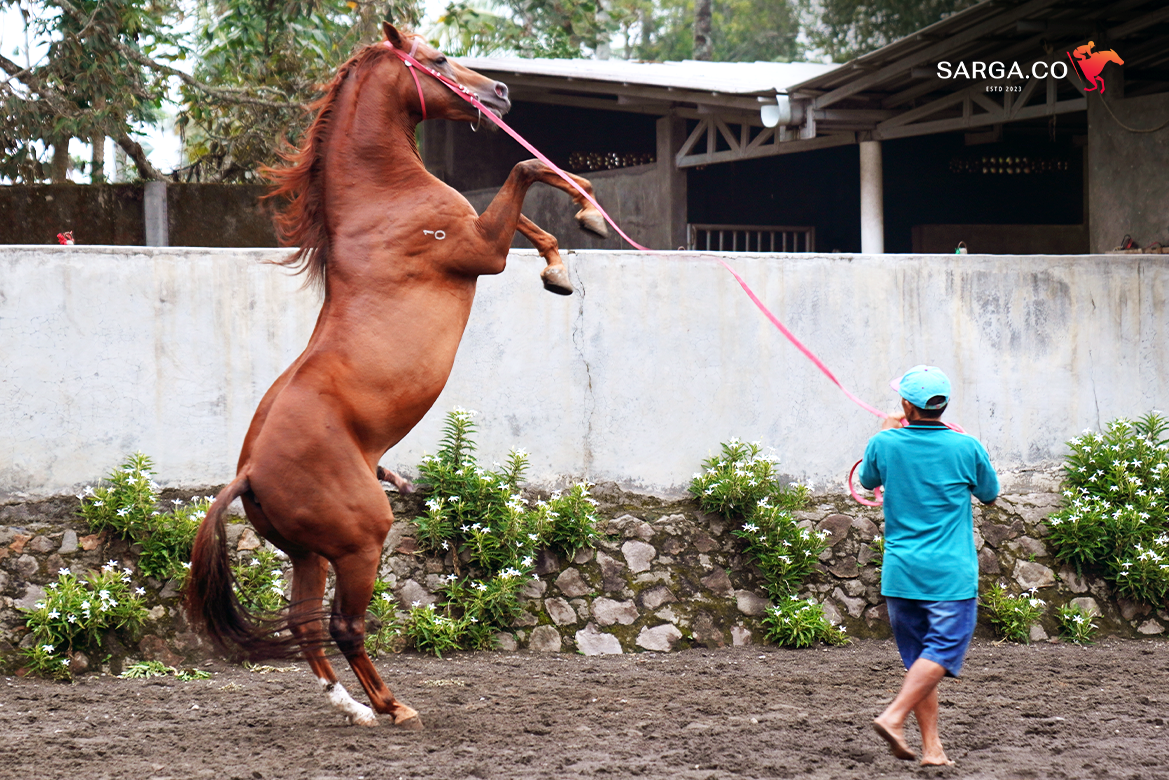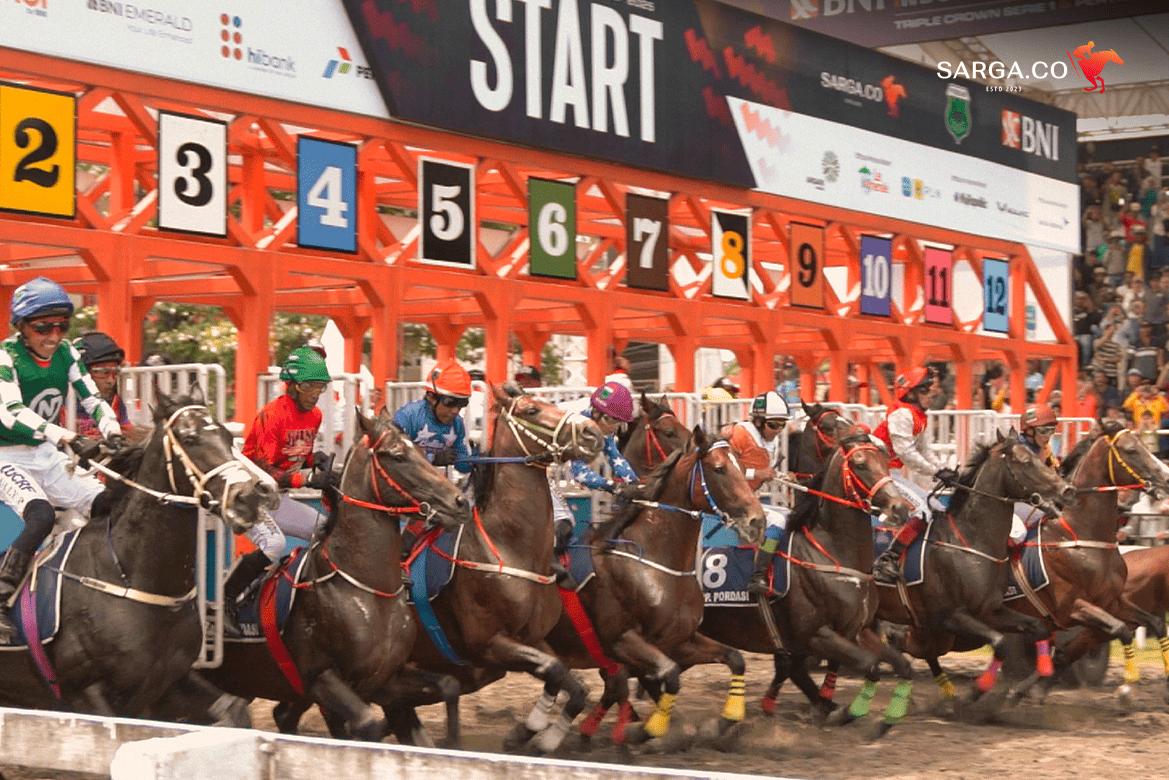Sarga.co—The speed and endurance of racehorses depend not only on the intensity of training and genetic superiority but also on nutrition that supports their optimal performance. Nutrition is crucial for building muscle strength, maintaining overall health, and ensuring sufficient energy for competition.
Behind a racehorse’s victory
The success of a racehorse stems from careful attention to providing balanced, high-quality feed tailored to the horse’s needs.
Primary energy sources for horses
As an agrarian country, Indonesia has abundant local feed ingredients like grains and forage to serve as horse feed. Considering the purpose of horse production for work performance—whether for racing or pulling loads—and their appealing physical appearance during competitions, feed, particularly its nutritional content, is a critical factor.
According to research by Sudirman et al. (2014) titled “Inventarisasi Hijauan Pakan Pacuan Kuda di Nusa Tenggara Barat” (Inventory of Forage for Racehorses in West Nusa Tenggara), the forage given to horses typically comprises a mixture of over five types, including Desmodium dichotomum Fabaceae, Alysicarpus vaginalis Fabaceae, Cynodon sp Poaceae, Eulalia amora Poaceae, Cynodon dactylon Poaceae, Leersia hexandra Poaceae, Dactyloctenium aegyptium Poaceae, and Eleusine indica.
These types of forage contain macronutrients such as dry matter, crude protein, crude fat, crude fiber, calcium, and phosphorus. Combining these forages helps compensate for the nutritional deficiencies of each type.
Further explained by Dr. Ir. Salvia et al. (2022) in the study “Teknologi Pengolahan Pakan” (Feed Processing Technology), feed materials are broadly categorized into plant-based ingredients. Examples include soybeans, corn, bran, wheat, forages (e.g., elephant grass, king grass), legumes (e.g., lamtoro leaves, Turi leaves), coconut meal, soybean meal, legumes, cassava, and others.
Adequate forage consumption aids in maintaining horses’ digestive systems, enabling them to process other feeds more effectively. Meanwhile, concentrates containing grains like wheat and corn provide high energy, essential for meeting the physical demands of racing.
Feed management

Haylage
Source: Freepik
Feeding cannot be done randomly. Each horse’s feed needs must be adjusted based on age, weight, activity level, and health condition.
For instance, young horses in their growth phase require higher protein portions than adult horses. Meanwhile, active racehorses need more energy from concentrates than non-racing horses.
An article published by Unairnews, “Pakar Nutrisi Hewan Beberkan Tips Mengatur Pola Pakan Kuda” (Animal Nutrition Experts Share Tips for Managing Horse Feeding Patterns) (2022), mentions that the quality of forage is crucial in a horse’s diet, whether in the form of silage or haylage. At least 40% of the diet should be fiber, equating to 1% of the horse’s body weight daily.
With proper nutritional support, horses can achieve maximum speed and have the endurance to complete races without excessive fatigue. Thus, horse owners and trainers must understand the importance of balanced nutrition in enhancing performance.
Horse digestive system

Horse Anatomy
Source: Freepik
Structured feeding is essential due to horses’ digestive systems being different from those of other livestock. Horses are classified as non-ruminant herbivores with a single digestive organ located in the hindgut (hindgut fermenters).
As a result, horse feed should be provided in multiple small portions throughout the day rather than all at once, as large quantities can disrupt digestion. Additionally, clean and fresh water must always be available since proper hydration significantly impacts a horse’s performance on the track.
Lawrence L. A. (2004), in the study “Feeding The Performance Horse,” explained that horses use 80–90% of feed for energy metabolism, utilizing carbohydrates and fats from their diet. During regular training, racehorses rely on fat reserves in their bodies as an energy source.
Further elaborated in the research by Gibs, P. G., and G. D. Potter (2002), “Concepts in Protein Digestion and Amino Acid Requirements of Young Horses,” horses can deliver oxygen to tissues during training to burn fat as an energy source. However, during races, horses cannot entirely rely on fat; instead, they use primary energy sources stored in blood glucose and liver and muscle glycogen produced from dietary carbohydrates.
It is vital to ensure that racehorses receive sufficient energy from carbohydrates in their feed to maintain blood sugar levels and store energy in muscle glycogen. Feed ingredients such as wheat and oats provide carbohydrates that can be used immediately or stored in muscles and the liver as glycogen for later use.
The secret behind champion horses
Racehorses’ victories on the track are not solely the result of training or genetics but also meticulous feed management. Proper nutrition is vital in building strength, speed, and endurance in racehorses.
By implementing appropriate and sustainable feeding practices, horse owners can ensure they provide the best support for their horses’ performance in every competition. Quality feeding is the secret behind a champion horse’s swift steps.




